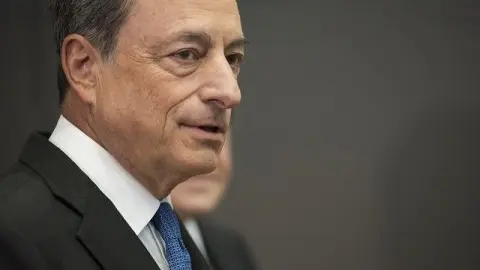ECB: To twitch or not to twitch?
The minutes of the January meeting illustrate the European Central Bank's increasing concern. However, today's encouraging confidence indicators should prevent the central bank from twitching at the March meeting
The minutes of the January ECB meeting show that the bank has become more concerned about the economic outlook but needs additional time, like everyone else, to assess if the downswing is temporary or something more permanent.
With today’s (temporary) relief from sentiment indicators, the situation in the eurozone does not look severe enough (yet) for the ECB to announce any quick policy changes at the March meeting
Regarding the most pressing issues for the ECB, i.e. the macro assessment, new Targeted Long Term Refinancing Operations (TLTRO) and the future path of monetary policy, the minutes revealed some interesting details:
- The ECB is struggling to see if the current downswing is transitory or something a bit more permanent and will wait until the March meeting when the new ECB staff projections will be available, hoping for more insights.
- Regarding the option of new TLTROs, the ECB felt that 'some consideration should be given to the outlook for liquidity conditions in the banking sector, as the redemptions of outstanding TLTROs were approaching, which might give rise to “cliff effects”'. The sentence 'While any decisions in this respect shouldn't be taken too hastily, the technical analyses required to prepare policy options for future liquidity operations needed to proceed swiftly' shows that the process to come up with some options has started.
Moving from January to March
As the January meeting was only an intermediate meeting between two staff projections, all eyes are now on the March meeting, in two weeks.
The eurozone still wobbles between solid domestic demand and increased external risks, and it remains unclear, in which direction the pendulum will eventually swing
Obviously, a lot has happened since the January meeting and today. The external risks have become even more uncertain, just think of Brexit or possible US tariffs on EU products, and hard data has been disappointing. The latest comments by senior ECB officials like Peter Praet, François Villeroy and Benoît Coeuré suggest the ECB has started testing the waters for some more monetary accommodation. However, with some relief from the latest confidence indicators, any changes to the ECB’s current policy stance, be it on action or words, have become less urgent.
Even though the next batch of ECB staff projections will probably bring some downward revisions to growth and inflation forecasts, these revisions will not be substantial enough to justify a change in the current stance. The eurozone still wobbles between solid domestic demand and increased external risks, and it remains unclear, in which direction the pendulum will eventually swing.
What could the ECB do.... if it really wanted to
As the urgency for hasty action has decreased slightly and the window for further policy normalisation appears to be closing, the ECB has hardly any option other than to keep its cards close to its chest.
For the time being, this means the ECB’s main focus will be on avoiding any unwarranted tightening of monetary policy rather than on more easing or normalisation. In this regard, the ECB has two main instruments at its disposal: in a broader sense liquidity support for banks and the forward guidance on rates.
- With regards to liquidity support, we think that there are more options than just another TLTRO - think of a deposit rate hike, LTROs, higher volumes on the interest rate free current account facility, new facilities for banks to park excess liquidity or a combination of two or more of these options. The big challenge for the ECB will be to balance the pros and cons of different options. For example, while another TLTRO would bring more relief to Spanish and Italian banks, a deposit rate hike would probably be welcomed by banks in core eurozone countries.
- Forward guidance on rates is an easier instrument to adjust. With increased economic uncertainty, changing forward guidance to “interest rates to remain at their current levels at least until the end of the year” is a no-brainer. Also, a change in forward guidance could be used to sell a deposit rate hike as a pure technical correction by postponing a first policy rate hike beyond the timing of a deposit rate hike. Lastly, more clarity on the length of the reinvestments, i.e. an extension, could also be applied as a dovish instrument but rather in a situation of unwarranted increases at the long end of the yield curve.
The real question: To twitch or not to twitch?
With today’s (temporary) relief from sentiment indicators, the situation in the eurozone does not look severe enough (yet) for the ECB to announce any quick policy changes at the March meeting.
Instead, we expect the ECB to announce that the Governing Council asked the relevant committees to look into options on how to deal with liquidity bottlenecks and bank profitability and present some action at the April meeting.
Even though recent comments from senior ECB officials gave rise to speculation about some changes at the March meeting, we think that the ECB will remain on high alert but not twitch just yet.
This publication has been prepared by ING solely for information purposes irrespective of a particular user's means, financial situation or investment objectives. The information does not constitute investment recommendation, and nor is it investment, legal or tax advice or an offer or solicitation to purchase or sell any financial instrument. Read more
Download
Download article
21 February 2019
In case you missed it: Hoping for stability This bundle contains 8 Articles